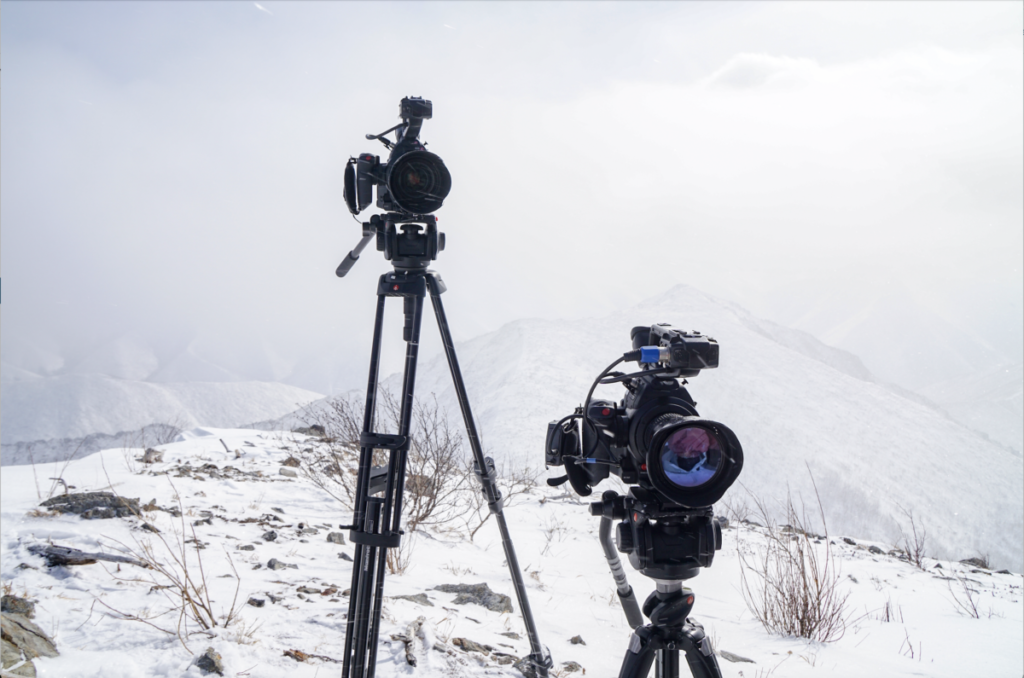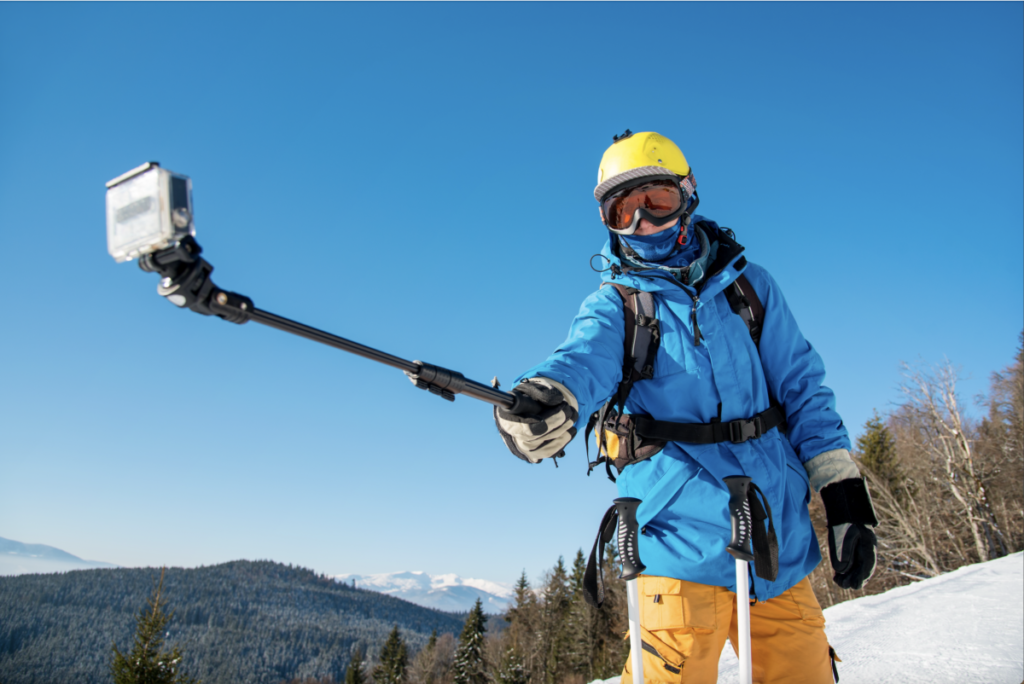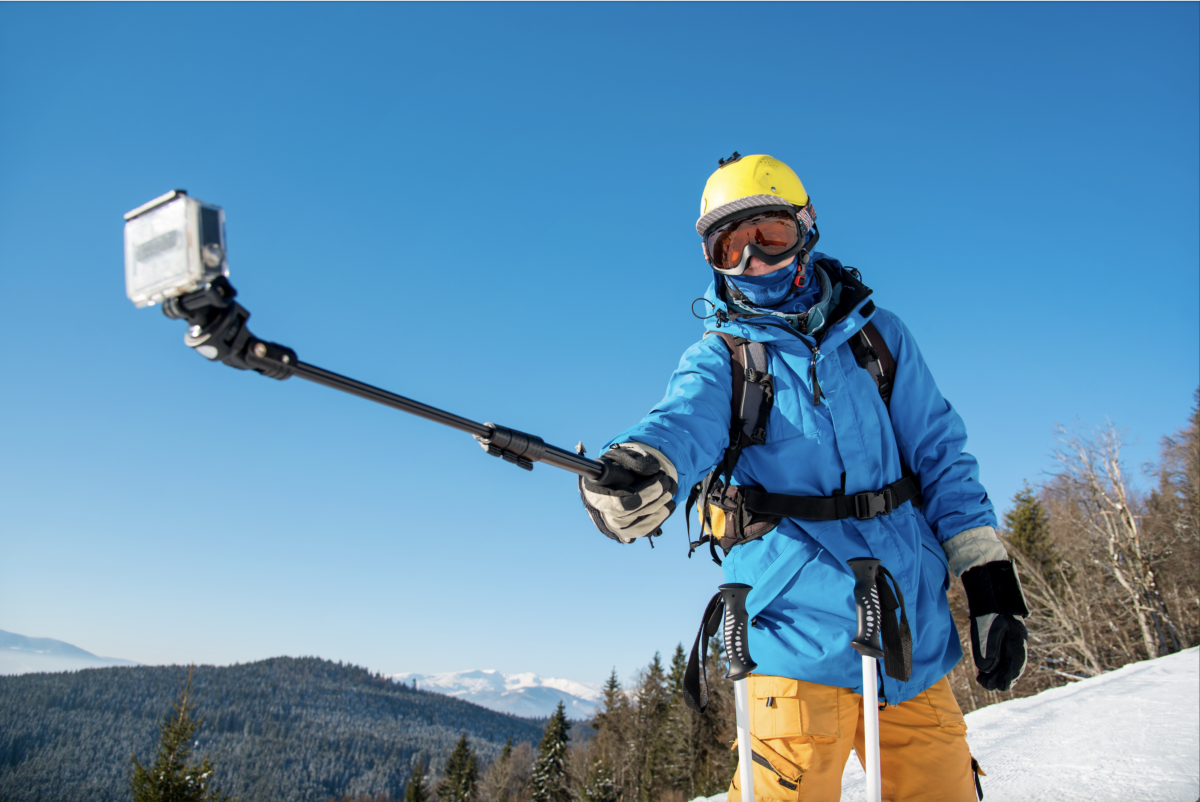The modern ski film takes on so many shapes and sizes thanks to the abundance of filming techniques, technologies, and platforms offered to the filmmaker. This, however, was not the case many years ago when filmmaker Warren Miller decided to take the risk of producing his own movies in an era where ski films had yet to flourish. During this time, ski films were sparse and lacked a fundamental structure that would make them appeal to the masses. At least until Warren Miller set out to complete his first film. Producing, directing, and narrating the entirety of his films, Miller was able to develop the perfect formula for the ski movie. Creating interest and proving that people not only wanted to watch a ski movie, but a feature length one, he paved the way for many to come. Time after time he showed his own personal touch though his entertaining filming and narration style, loved so much by audiences that he influenced much of the genre. Although Warren Miller served as an important pioneer of the modern ski film allowing him to dominate the genre for so many years, advancements made in film technology have created a climate where his once per year feature length film is no longer sustainable.
Born in Hollywood, Los Angeles, Miller had always had a strong attraction to film, and with access to surfing and skiing, he quickly developed a unique set of hobbies perfect for his future career. Warren Miller was born 1924 to his father, a fairly successful radio announcer, who after losing his job to the great depression, began to drink heavily. Because of this, Warren spent as much time as he could away from home chasing the things he loved, such as surfing. He also spent a lot of time with the Boy Scouts where he first encountered skiing at a young age. Once he reached the age of 18, he was required to enlist in the navy. After finally being released at the age of 22, Miller headed straight to the mountains where he was quickly reminded of his affinity for skiing. He wasted no time becoming a full-blown ski bum, living out of a trailer, taking any job he could get, and even hunting rabbits for an entire season in order to visit every resort within driving distance. He then purchased his first camera to analyze his own skiing technique, and that was when the idea of making a ski movie finally developed.
With the purchase of his first Bell & Howell 8-mm film camera, a young ambitious Warren Miller started to film skiing with the intent of showing a feature length movie to audiences. Miller was more determined than ever to get his film seen by the masses, however, he soon learned how expensive it was to create and show a film in 1949. Besides the starting cost of his camera, Warren invested $250 of his own money on just rolls of film. This however did not even cover all the rolls he needed, and he still needed more money for a projector and release print. Eventually Warren found four men, who he surfed with, who were each willing to supply $100 for his cause. Now with rolls of film, a projector, and the final release print, Warren only needed a way to provide music. Thankfully, he was gifted an Ampex tape recorder by his grandmother, allowing him to finally get in contact with theaters around Southern California. However, a problem surfaced. Just about every theater requested that instead of narrating the movie himself, he paid someone else to do it. Already having invested so much money in the production of his film, Warren knew he could never afford to pay a narrator, so he agreed to show his film at the one place that would let him do it alone. For the first time ever, Warren Miller showed his first film, Deep and Light, to an audience, narrating it live in the theater. The showing was a success, and he was quickly booked again for the following year, kicking off his lifelong career.

After the successful first showing of Deep and Light, Warren saw little stopping him from continuing to produce movies and set off to start his second movie eventually turning into his dominant 55-year long run of feature length films. As Miller began to get booked every year, he had to switch to a year-long cycle of filming, editing, and narrating movies on the road. Year after year, he insisted on narrating live, requiring he travel all over the U.S. to not only film, but also to show his movies. As time went on, he tweaked and perfected his voice in response to his audiences and created a name for himself amongst the film and ski industries. Miller’s film prowess granted him opportunity after opportunity, keeping him ahead of the competition. As ski resorts opened, the first thing they wanted was their own Warren Miller film to reach the masses and spike interest. As snowmaking developed, Warren Miller was amongst the first to cover it, keeping his viewers in awe and entertained. He had developed and perfected a formula for the ski movie, and continuously left audiences waiting eagerly for the next year’s film.
The revolutionary VHS tape was introduced into the American market in 1977, which allowed for a level of freedom in film consumers had not yet seen. The introduction of VHS impacted the film industry immensely, as this innovative technology shifted the dynamic by which audiences consumed movies and television. The VHS allowed users at home to record, store, and watch footage that would be previously missed. This brought an exponentially greater amount of content to the viewers and provided them with a level of never-before-seen choice in watching film. As people began selling tapes for consumers to watch at home, VHS became more and more common in U.S. households. And by the mid-1980s, a VHS could be found in most homes. In these years, production companies began recording the same movies people had previously had to go to a theater to see. Coupled with more lenient fair use laws for recording TV, the cost of VHS dropped dramatically, and rental stores began popping up everywhere.
The introduction of VHS did little to slow down Miller’s run of films, however, the changes it made to the market marked the final era of his career. As VHS came into the spotlight, Warren Miller changed his ski movie formula very little, still producing and showing the films much the same way. In order to keep up with the times, Miller also taped over his previous movies to be able to supply them to the home VHS market. While this didn’t stop him from producing films at the same yearly rate, the effects began to be seen on his viewership. Warren Miller attempted to break into the TV market, which now saw viewership supported by fair use laws allowing shows to be taped by the public but was ultimately unsuccessful. With competitors in the ski film genre having better access to the public’s home, Warren needed to adapt. In 1988, he sold his company to his son, Kurt Miller, who took the company in a more competitive direction. Kurt shied away from Warren’s ideologies and saw his father’s ski movie formula as outdated. Warren was forced to cut unapproved jokes and lost out on narration in favor of interviews with the skiers, on whom the movies were based.
This year, 1988, served as the last year Warren Miller produced, directed, and narrated the entirety of his films. Despite remaining active, this left much of the job to be carried out by his son and entertainment company. With a disappearing role in the company, and in his own films, Warren started to cut back on the number of showings he would address live. He still wrote the script and provided general narration for the films, but gradually stopped producing classic Warren Miller style films until he stopped being actively involved in 2004. This marked the end of a 55 straight movie long career defined by his own personal style, however, beaten by the times.

The introduction of the digital era of film allowed advancements in film technique and technology to advance rapidly, marked significantly by Gopro’s release of the Hero camera. The digital camera began to boom in the mid 90s and developed at an unprecedented rate. With the introduction of the DVD in 1997, the consumer market for films was once again changed allowing for more freedoms and ease of use. Boasting a smaller, denser, and more versatile package, the DVD quickly became the norm and by the mid 2000s, VHS was completely taken off the shelves. Gopro released the Hero in 2004, starting a long line of action cameras that allowed any skier to strap one on to their helmet and start filming. Alongside it, the world of digital cameras was able to expand into every direction, creating cameras not only specific to any scenario, but usable for any buyer.
Alongside the advancements made in camera technology, online media platforms, especially social media, allowed for unprecedented film access to the average consumer. Looking at why ski films are the way they are today, a key player was Youtube. Released in 2005, it served as somewhere anyone could post a ski film of any length, and people would watch. With social media, not only were skiers able to promote their content for basically free, but they could also make a name for themselves by only posting on their preferred platform. This provided the consumer with endless amounts of ski content, diversifying the genre and changing the way many saw ski movies.
With so many outlets for filming and uploading ski content, the genre today sees fewer dominant figures such as Warren Miller once was, in favor of more plentiful, however shorter clips of skiing. When Warren Miller was getting started in film, the ski genre was basically untouched, and the cost of entry for production was rather high. Producing these long and expensive films was hard, and challenging established directors single handedly was nearly impossible. Seeing as Miller proved he had a working film recipe, this harsher film climate allowed him to remain a dominant player for years to come. During this time, people were willing to watch feature length films, as that was all they were provided in a time when going to the cinema was their only movie outlet. As time went on and technology progressed, through VHS and the boom of the Digital age, ski films became more common and shorter. Competition increased dramatically as skiers themselves could film and upload anything they did, essentially splitting the job of Warren Miller amongst the ski community. Warren’s recipe for the perfect ski film no longer had a place amongst these shorter clips as feature length ski films were lost to the times. Despite laying the foundation for the entire genre, Warren Miller’s classic style and prevalent role in the film industry no longer has a place amongst the ski genre today.
Bibliography
Case, Dominic. “Film Technology in Post Production.” Oxford, Boston: Focal Press, 2001.
“Classic Ski Movies: Where Did They Go?” Red Bull Gives You Wings – Redbull.com, https://www.redbull.com/se-en/the-history-of-classic-ski-movies.
Colorado Snowsports Museum and Hall of Fame. “Ski Artifacts: Warren Miller’s Bell & Howell Camera, Wood Prototype Snurfer.” VailDaily.com, VailDaily.com, 14 July 2017, https://www.vaildaily.com/news/ski-artifacts-warren-millers-bell-howell-camera-wood-prototype-snurfer/.
Ganapati, Priya. “June 4, 1977: VHS Comes to America.” Wired, Conde Nast, 4 June 2010, https://www.wired.com/2010/06/0604vhs-ces/.
Gardner-Smith, Brent. “Warren Miller Speaks out against Warren Miller Ent.” Aspen Daily News, 18 Dec. 2017, https://www.aspendailynews.com/warren-miller-speaks-out-against-warren-miller-ent/article_70d9591a-0efc-50ce-a589-e357b523de63.html.
Hardy, Chloe. “The Evolution and Inspiration of the Ski Movie.” Morzine Source Magazine, 8 Dec. 2017, https://www.morzinesourcemagazine.com/the-evolution-and-inspiration-of-the-ski-movie/#.
Holtcamp, Victor. Interchangeable Parts: Acting, Industry, and Technology in US Theater. Ann Arbor: University of Michigan Press, 2019.
“How Tech Has Shaped Film Making: The Film vs. Digital Debate Is …” – Wired. https://www.wired.com/insights/2015/01/how-tech-shaped-film-making/.
“How the Invention of the VHS Tape Changed the Film Industry.” Video 2 DVD Transfers News | Transfer Your Previous VHS Tapes to DV Format at Competitive Prices, 22 Dec. 2021, https://www.video2dvdtransfers.co.uk/blog/2021/10/27/how-the-invention-of-the-vhs-tape-changed-the-film-industry/.
Prince, Steven. “The Emergence of Filmic Artefacts—Cinema and Cinematography in the Digital Era.” Film Quarterly (2004): 24-33.
Vannini, Phillip. “The GoPro Gaze.” Cultural Geographies in Practice (2017): 149-155.
“Warren Miller Cranked out 55 Ski Movies in 55 Years and Made It Look Easy. A New Documentary ‘Will Pull Back the Curtain’ to Show How Hard It Was.” The Salt Lake Tribune, 23 Jan. 2019, https://www.sltrib.com/artsliving/2019/01/23/warren-miller-do-it/.
Warren Miller with Andy Bigford. “The Making of My First Ski Film.” Warren Miller Entertainment, 4 May 2020, https://warrenmiller.com/making-my-first-ski-film.

